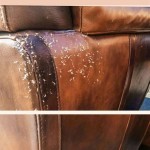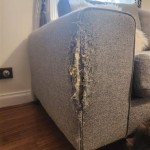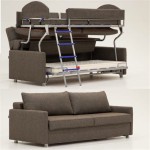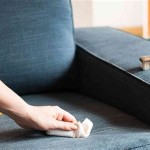How To Clean Couches Effectively
Couches, being a central element in living spaces, are subjected to constant use and subsequently, accumulate dirt, stains, and allergens. Regular cleaning is essential not only for maintaining the aesthetic appeal of the furniture but also for promoting a healthy living environment. The following guide provides a comprehensive overview of how to clean couches effectively, encompassing preparation, identification of upholstery type, cleaning methods, and prevention strategies.
Preparation for Cleaning
Prior to initiating any cleaning procedure, meticulous preparation is paramount. This involves gathering necessary supplies and adequately preparing the surrounding area. Failure to properly prepare can result in ineffective cleaning or potential damage to the couch or the surrounding environment.
The first step in preparing to clean a couch is to gather all the required materials. These typically include a vacuum cleaner with upholstery attachments, cleaning solutions appropriate for the fabric type, soft-bristled brushes, microfiber cloths, buckets, and protective gloves. Specific cleaning solutions may include mild detergents, specialized upholstery cleaners, vinegar, baking soda, or enzyme-based stain removers. Having all these materials readily available streamlines the cleaning process and prevents unnecessary delays.
After assembling the cleaning supplies, it is crucial to prepare the surrounding area. This involves moving any furniture or objects that may obstruct access to the couch. Covering the floor around the couch with a drop cloth or old towels is also recommended to protect it from spills or cleaning solution residue. Opening windows or ensuring adequate ventilation is important to facilitate the drying process and minimize the build-up of potentially harmful fumes from cleaning agents.
A thorough vacuuming of the couch should be the initial step in the cleaning process. Using the upholstery attachment, carefully vacuum the entire surface of the couch, including cushions, crevices, and the back. This removes loose dirt, dust, crumbs, and pet hair, which can hinder the effectiveness of subsequent cleaning steps. Pay particular attention to areas that are frequently used or prone to accumulating debris.
Identifying Upholstery Type and Cleaning Codes
The type of upholstery material significantly dictates the appropriate cleaning method and the types of cleaning solutions that can be safely used. Using the wrong cleaning solution can lead to discoloration, shrinkage, or irreversible damage to the fabric. Therefore, identifying the upholstery type and referring to the manufacturer's cleaning codes is crucial.
Most couches have a cleaning code tag attached to them, typically found under the cushions or on the underside of the couch. These codes provide specific instructions for cleaning the upholstery. The most common cleaning codes include:
W:
This code indicates that the upholstery can be cleaned with water-based cleaning solutions.S:
This code signifies that only solvent-based or dry-cleaning solutions should be used. Water-based solutions can cause staining or shrinkage.WS:
This code means that either water-based or solvent-based cleaning solutions can be used. However, it is always recommended to test the solution in an inconspicuous area first.X:
This code indicates that professional cleaning is recommended. Vacuuming or light brushing is the only recommended cleaning method for this type of upholstery.
If the cleaning code tag is missing or illegible, it is essential to identify the upholstery material. Common couch upholstery materials include cotton, linen, polyester, microfiber, velvet, and leather. Each material requires a specific cleaning approach.
Cotton and linen are generally durable and can be cleaned with water-based solutions. However, they are prone to shrinking, so it is important to avoid excessive moisture. Polyester and microfiber are synthetic fabrics that are resistant to staining and can be cleaned with mild detergents and water. Velvet is a delicate fabric that requires special care. It is often recommended to use a solvent-based cleaner or consult a professional cleaner. Leather requires specialized leather cleaners and conditioners to prevent drying and cracking.
Before applying any cleaning solution to the entire couch, it is crucial to perform a spot test in an inconspicuous area, such as the back or underside of the couch. This helps to determine if the cleaning solution will cause any discoloration, damage, or shrinkage. Apply a small amount of the cleaning solution to the test area and let it sit for a few minutes. Blot the area with a clean white cloth. If there is any color transfer or damage, discontinue use of the cleaning solution and seek professional cleaning advice.
Cleaning Methods Based on Upholstery Type
Once the upholstery type and cleaning code have been identified, the appropriate cleaning method can be selected. Different cleaning methods are suitable for different types of upholstery, and using the wrong method can lead to damage or ineffective cleaning.
Water-Based Cleaning (Code W or WS):
For upholstery with a "W" or "WS" cleaning code, water-based cleaning solutions can be used. Start by mixing a mild detergent with warm water in a bucket. Avoid using harsh chemicals or abrasive cleaners, as they can damage the fabric.
Dip a clean microfiber cloth into the cleaning solution and wring out the excess moisture. The cloth should be damp, not soaking wet. Gently blot the stained or dirty areas of the couch, working from the outside of the stain inwards to prevent it from spreading. Avoid rubbing vigorously, as this can damage the fabric.
After blotting the stained areas, use a clean, damp cloth to rinse the area. This removes any remaining cleaning solution and prevents residue build-up. Blot the area with a dry cloth to absorb excess moisture. Allow the couch to air dry completely, preferably in a well-ventilated area. Using a fan can help to speed up the drying process.
Solvent-Based Cleaning (Code S or WS):
For upholstery with an "S" or "WS" cleaning code, solvent-based or dry-cleaning solutions should be used. These solutions are designed to clean delicate fabrics without using water.
Ensure adequate ventilation when using solvent-based cleaners. Wear protective gloves and a mask to avoid inhaling harmful fumes. Apply the solvent-based cleaner to a clean cloth and gently blot the stained or dirty areas of the couch. Follow the manufacturer's instructions for application and drying time.
Once the solvent-based cleaner has dried, vacuum the couch thoroughly to remove any residue. It is recommended to consult a professional cleaner for upholstery with an "S" cleaning code, especially if the stains are severe or widespread.
Steam Cleaning:
Steam cleaning is an effective method for deep cleaning couches and removing stubborn stains and odors. However, it is important to ensure that the upholstery is suitable for steam cleaning. Steam cleaning is generally safe for couches with a "W" or "WS" cleaning code, but it should be avoided for couches with an "S" or "X" cleaning code.
Follow the manufacturer's instructions for operating the steam cleaner. Fill the steam cleaner with water and allow it to heat up. Attach the upholstery attachment to the steam cleaner and gently move it over the surface of the couch. Avoid over-saturating the fabric with steam. Over-saturation can lead to shrinkage or damage.
After steam cleaning, allow the couch to air dry completely. Using a fan can help to speed up the drying process. Vacuum the couch thoroughly once it is dry to remove any remaining dirt or debris.
Spot Cleaning:
For minor stains and spills, spot cleaning can be an effective way to address the issue without having to clean the entire couch. Promptly addressing spills is crucial to prevent them from setting into the fabric.
Blot the stain immediately with a clean, dry cloth. Avoid rubbing the stain, as this can spread it further. Use a stain remover appropriate for the upholstery type. Test the stain remover in an inconspicuous area first to ensure that it does not cause any discoloration or damage.
Apply the stain remover to a clean cloth and gently blot the stain. Work from the outside of the stain inwards to prevent it from spreading. Allow the stain remover to sit on the stain for a few minutes, then blot the area with a clean, damp cloth to remove any remaining residue. Blot the area with a dry cloth to absorb excess moisture. Allow the area to air dry completely.
Preventative Measures
Preventative measures are critical for maintaining the cleanliness of couches and minimizing the need for frequent cleaning. Implementing proactive strategies can significantly extend the lifespan of the upholstery and reduce the accumulation of dirt, stains, and allergens.
Regular vacuuming is one of the most effective preventative measures. Vacuuming the couch at least once a week removes loose dirt, dust, crumbs, and pet hair before they become embedded in the fabric. Use the upholstery attachment to reach crevices and hard-to-reach areas.
Using protective covers or throws can help to shield the couch from spills, stains, and pet hair. Choose covers or throws that are easy to remove and wash. This allows for quick and easy cleaning in case of accidents.
Promptly address spills and stains as soon as they occur. Blot the spill immediately with a clean, dry cloth. Avoid rubbing the stain, as this can spread it further. Use a stain remover appropriate for the upholstery type. Test the stain remover in an inconspicuous area first to ensure that it does not cause any discoloration or damage.
Avoid eating or drinking on the couch. This reduces the risk of spills and stains. If eating or drinking is unavoidable, use placemats and coasters to protect the upholstery.
Periodically rotate and fluff couch cushions to ensure even wear and prevent them from becoming flat and compressed. This also helps to distribute dirt and prevent it from concentrating in one area.
Consider professional cleaning services for deep cleaning and stain removal. Professional cleaners have the expertise and equipment to safely and effectively clean delicate upholstery materials.

How To Clean Your Sofa Couch With Oxi Youtube

How To Clean A Fabric Couch And Sofa Pro Housekeepers
.webp?strip=all)
How To Clean A Couch Thoroughly

How To Really Clean A Fabric Couch Marly Dice

Diy How To Clean Your Sofa Save Money Youtube

How To Clean A Fabric Couch And Sofa Pro Housekeepers

Easy Suede Couch Cleaning Protection Guide

How Often Should I Clean My Couch
.webp?strip=all)
How To Clean A Couch Thoroughly

How To Deep Clean Fabric Sofa At Home








